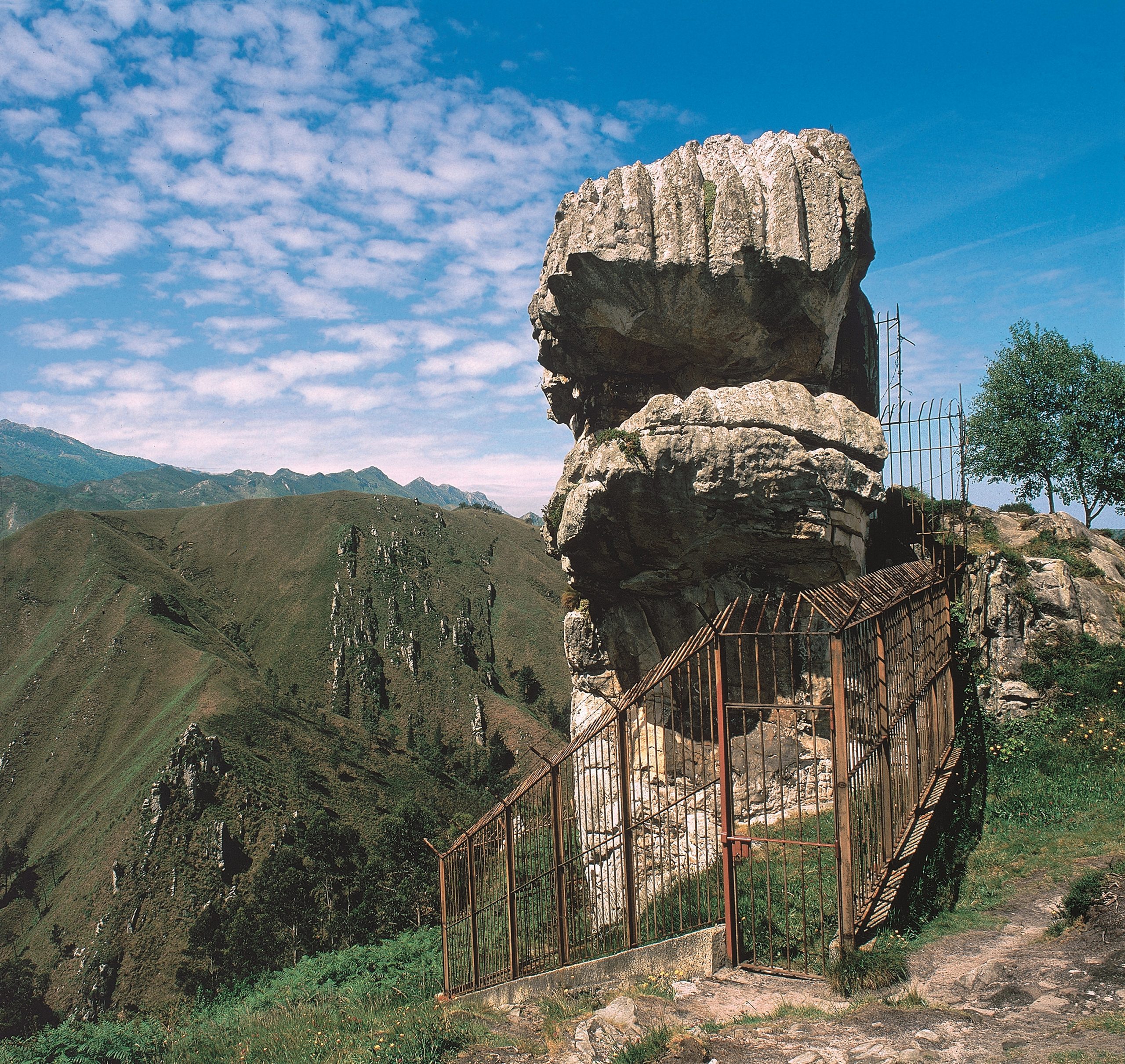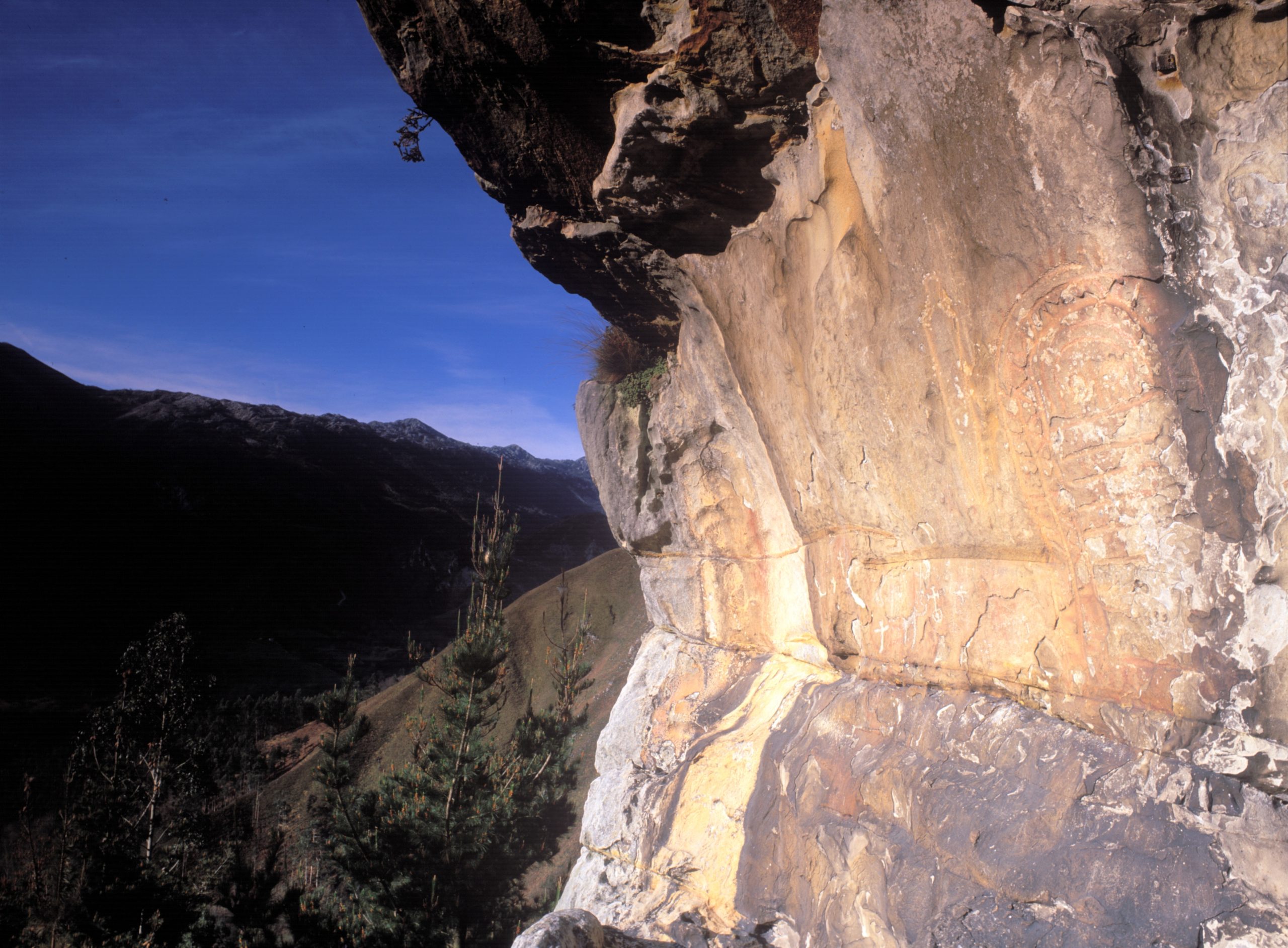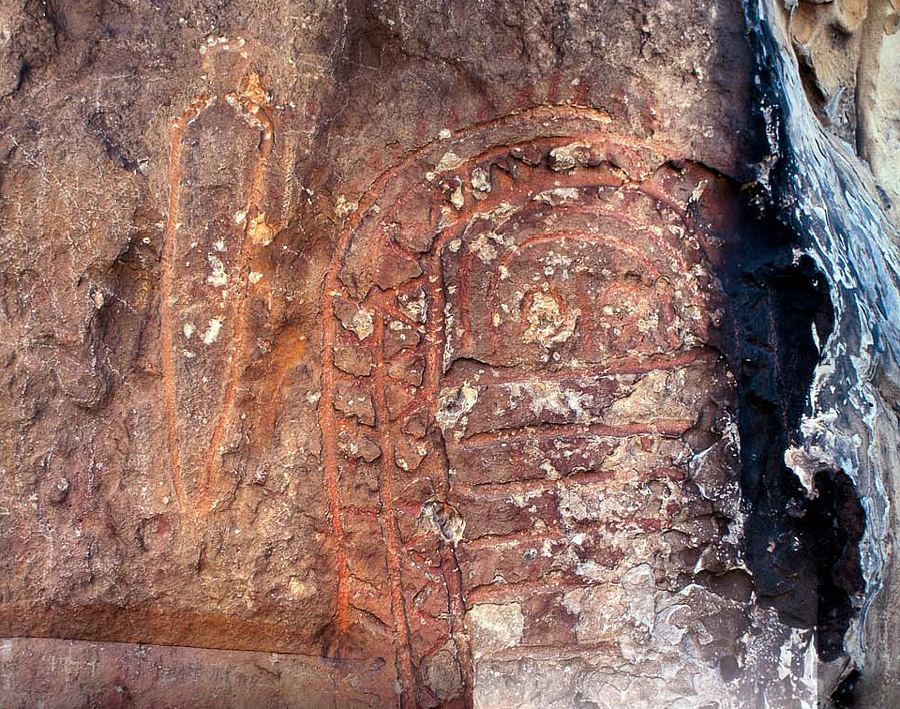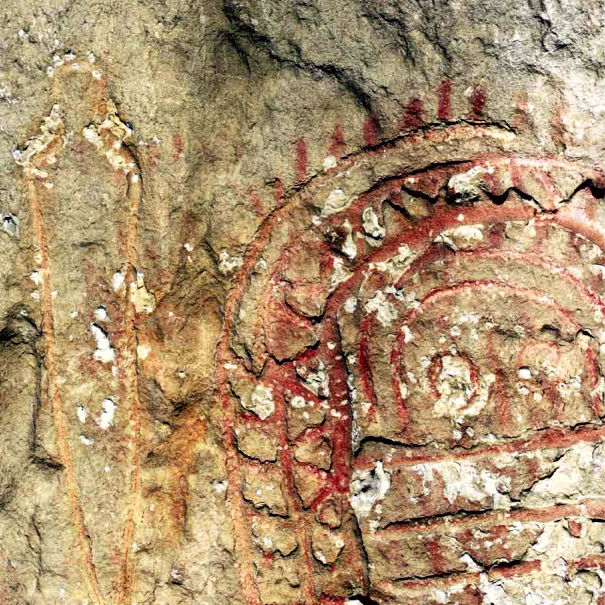Age of the artistic representations: Neolithic – Copper Age.
General description of the destination: The Idol of Peña Tú is a sandstone outcropping to the west of La Borbolla Range, in a setting where some fifty burial mounds are preserved.
There is a small shelter at the bottom where the paintings and engravings can be seen. It is in a poor state of conservation, mainly due to the effects of erosion.
Two types of depictions can be distinguished. The first consists of painted schematizations, series of puncture marks and anthropomorphic figures. The second, engraved and painted, includes the idol per se and a dagger.
From modern times, it preserves a third group consisting of carved crosses and pitting.
The idol and dagger motifs, together with the characteristics of the location (rock shelter located in a setting consecrated in megalithic times as a funerary area) are factors that allow the Peña Tú rock art site as a whole to be related to the presence of a burial site of an important personage. The rock art is on a prominent crag at the western end of Sierra Plana de la Borbolla. On the south-eastern side of the rock a small overhang conserves several paintings and some engravings. The main composition is a human figure inside a large geometric pattern, with the representation of a dagger or sword at its side.
History of the site: Known traditionally as “Peña del Gentil”, the site was discovered archaeologically in 1914. It has been a National Monument since 1924. Area of Tumuli around the Idol of Peña Tú.
Museographic resources description: An attractive modern building holds the educational exhibition about Peña Tú and the Prehistory of Sierra de Borbolla. The Art of Late Prehistory is the main theme on display. The centre provides various services for visitors. CURRENTLY CLOSED.

